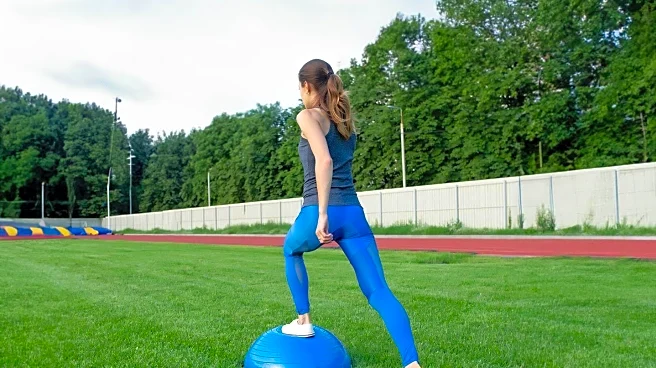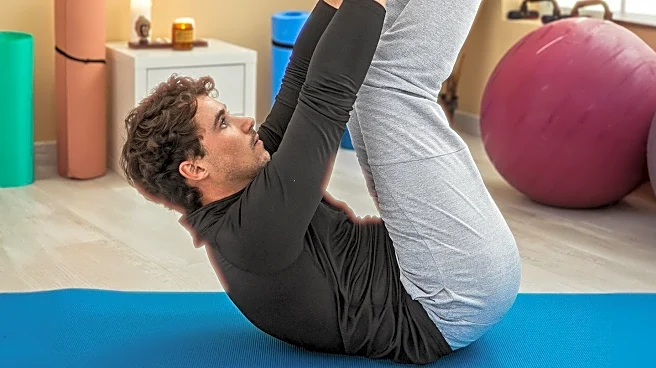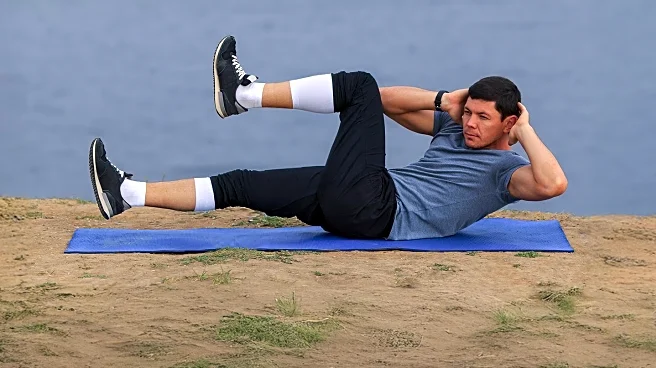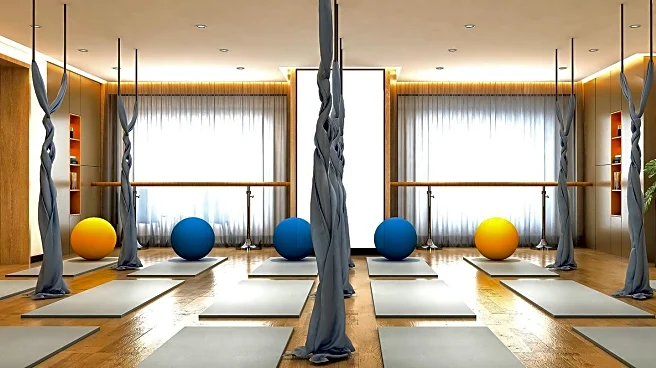Rapid Read • 8 min read
Gemma Folkard, a Pilates instructor, emphasizes the importance of incorporating lower-body 'pull' exercises into workout routines, particularly for individuals experiencing back pain. These exercises target the posterior chain, which includes muscles along the back of the body such as the hamstrings, glutes, and lower back. Folkard explains that while lower-body 'push' movements like squats and lunges are common, 'pull' exercises can offer significant benefits by strengthening the hip flexors and improving knee stability. This approach can help alleviate back pain caused by postural inefficiencies and muscle imbalances due to excessive sitting.
AD
The focus on lower-body 'pull' exercises addresses a common issue faced by many individuals: back pain resulting from weak or underused muscles. By strengthening the posterior chain and hip flexors, these exercises can improve posture and reduce the risk of injury. This approach is particularly relevant in today's sedentary lifestyle, where prolonged sitting can lead to muscle imbalances. Incorporating these exercises into regular fitness routines can enhance overall physical health and mobility, benefiting a wide range of individuals, from office workers to athletes.
Folkard suggests a Pilates-inspired lower-body pull workout that can be performed at home using a resistance band or bodyweight. This workout includes exercises like supine leg pulls, shoulder bridge leg pulls, and standing leg pulls. By integrating these exercises into their fitness regimen, individuals can work towards alleviating back pain and improving their overall physical condition. As awareness of the benefits of these exercises grows, more fitness enthusiasts and trainers may adopt similar routines to address common musculoskeletal issues.
The emphasis on lower-body 'pull' exercises highlights a shift in fitness trends towards more balanced and functional training methods. This approach not only targets specific muscle groups but also promotes overall body awareness and coordination. As more people become aware of the benefits of such exercises, there may be a broader cultural shift towards incorporating functional movements into daily routines, potentially reducing the prevalence of back pain and related issues.
AD
More Stories You Might Enjoy










